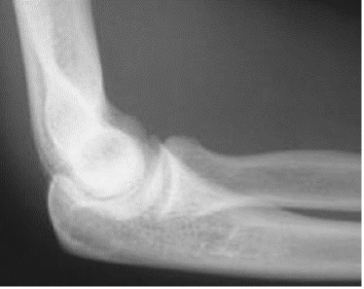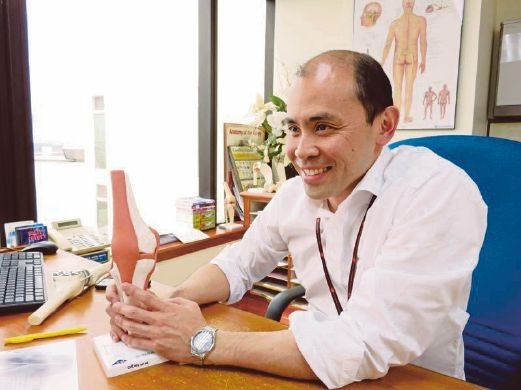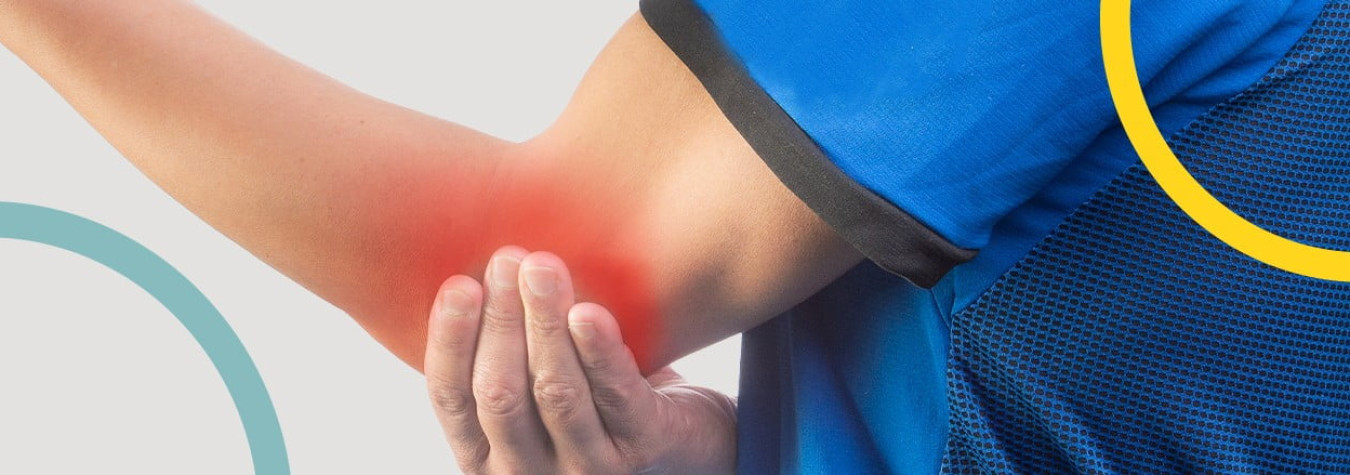Understanding Elbow Dislocations with Orthopaedic Specialist, Dr Gandhi Nathan Solayar
|
July 14, 2021 |
Doctor in Article:

|
Dr Gandhi Nathan Solayar |
All You Need to Know About Elbow Dislocations
by Dr Gandhi Nathan Solayar FRCS (Tr&Orth)
Key Takeaways:
- Elbow dislocations should be treated urgently as early reduction
- Steps to immobilize the arm (such as a sling) would help with pain and application of ice or a cold compress may help reduce the swelling
- Once an elbow dislocation has occurred, the most important step is to seek urgent medical help from an orthopaedic specialist as delay in treatment may worsen long term outcomes
The elbow is a joint which consists of three bones namely the humerus (upper arm) and two forearm bones (radius & ulna). It is an important structure and injury to this joint, if not properly treated, can be very debilitating to the patient in terms of arm function. In this article, we will look specifically at dislocations of the elbow joint in terms what, why, and how to appropriately manage this injury.

Image from www.versusarthritis.org
Common Causes & Symptoms of Elbow Dislocation
Elbow dislocations are fairly common injuries second only to shoulder dislocations in adults (in children, this is the commonest joint dislocation). It normally occurs after a fall with direct loading and rotation of the forearm. The elbow normally dislocates posteriorly (towards the back) and up to 50% of these injuries are associated with sporting activity.

X-ray showing a posteriorly dislocated elbow joint (from https://orthoinfo.aaos.org)
When an acute elbow dislocation occurs, the immediate symptoms include severe pain, deformity (large bulge at the back of the elbow due to the posterior olecranon dislocation), swelling and inability to move the joint. In some cases, there maybe associated fractures around the elbow joint. Severe cases may also demonstrate nerve and blood vessel damage which would need urgent treatment.
How to Manage Elbow Dislocation?
Once an elbow dislocation has occurred, the most important step is to seek urgent medical help from orthopaedic specialist as delay in treatment may worsen long term outcomes. At the point of injury, steps to immobilize the arm (such as a sling) would help with pain and application of ice or a cold compress may help reduce the swelling. The patient should be brought to the emergency department as soon as possible.
At the emergency department, a close examination of the limb is performed to rule out potential nerve and blood vessel injuries. The patient is made comfortable with pain killers and x-rays are taken to assess for associated fractures and the extent of the dislocation.
Reduction Technique – Treatment for Joint
Early reduction (restoring the bones back to its original position within the joint) is frequently performed after preliminary investigations. In the emergency room, this is done by initially sedating the patient and carefully manipulating the elbow joint back into place.
In certain cases, the orthopaedic surgeon may choose to perform the reduction under full anaesthesia (in the operating room) with the help of muscle relaxants and portable x-rays. Once the joint is reduced, the surgeon would often immobilize the elbow with plaster, fiberglass or a brace with the arm in an L-shaped position (Above elbow casting).

The elbow joint following reduction to its normal position (https://orthoinfo.aaos.org)
In some cases which involve fractures around the elbow joint, further imaging studies would be necessary. This would allow the surgeon to appropriately plan for surgical reconstruction of the elbow joint by proper fixation of the fractured fragments.
In my practice, this would include computed tomography (CT) scans to accurately assess the joint and extent of the injury. Once the fractures have been surgically stabilized and the elbow joint reduced, the arm is placed in a cast/brace similar to a non-surgically treated elbow dislocation.

Complex elbow fracture dislocation before and after surgery (from Cho et al. Diagnostics 2020)
In rare & severe cases involving arterial injury, immediate joint reduction is paramount. While reduction of the elbow often leads to a restoration of blood supply to the arm, further imaging studies (such as CTs or MRIs) maybe indicated to accurately confirm restoration of arterial function.
If the limb remains avascular (no return of blood supply), urgent surgery is required to save the limb with both the orthopaedic and vascular surgeon at hand to repair the injured artery and to stabilize the upper limb. Failure to do this promptly may lead to ischaemia, necrosis and possible limb amputation as a last resort.
Key Element of Dislocated Elbow Treatment
One key element in managing elbow dislocations following reduction is the balance between immobilization to allow for tissue healing and rehabilitation (movement of the elbow) for return to function. In most of my patients with elbow dislocations (either surgically or non-surgically treated), I would recommend a short period of immobilization (1-2 weeks in most cases) followed by careful, supervised rehabilitation concentrating on elbow movement.
I generally prefer my patients to use functional elbow braces as this protects the elbow joint while allowing for gradual increases in range of motion. Long term immobilization (more than 4 weeks) of the elbow joint is often associated with significant stiffness and therefore, should be avoided if at all possible.

Functional Elbow Brace (from http://www.rehab-robotics.com.hk)
The Complications of Joint Dislocation
Other complications (apart from joint stiffness) include locking, pain and reduction in achieving full elbow extension. This is occasionally seen in cases where fragments of bone or cartilage tears which occur during the initial injury become loose bodies within the elbow joint causing symptoms.
If left untreated, this may further lead to joint degeneration and worsening arthritis. These loose bodies can be successfully treated by minimally invasive techniques such as elbow arthroscopy which allow the surgeon to remove the offending matter, examine the joint and stabilize the remaining cartilage.
Joint Dislocation: Insight from Orthopaedic Specialist
In certain patients (particularly adolescents and young adults), a previous elbow dislocation can result in significant ligamental injuries around the joint which may contribute to pain, looseness and further dislocations; especially in those who participate in sporting activities which involve throwing.
In these patients, an MRI is often required to assess for the extent of damage to joint and surrounding ligaments. While this is not commonly performed, in cases of significant instability, surgical reconstruction of the ligaments around the elbow joint would allow for better resolution of symptoms and return to function. Proper, supervised rehabilitation is very important post-surgery particularly in this sub-set of patients in my view in achieving a good outcome. Contact us for more info!
In conclusion, elbow dislocations should be treated urgently as early reduction of the joint allows for timely immobilization, quicker rehabilitation and may prevent long term complications such as joint stiffness and loss of function. Associated fractures need to be accurately identified early (with the help of advanced imaging such as CT scans) and if surgery is required, early operative stabilization will allow for early rehabilitation. Adherence to supervised rehabilitation after the injury is paramount in achieving a good outcome in the treatment of elbow dislocations. Good luck!
About OSC:
Orthopaedic Specialist Centre (OSC) is the brainchild of four highly-experienced Malaysian orthopaedic specialists, who have come together to create an innovative centre of excellence purely focused on bone and joint care. Using their decades of experience in practice, they have embarked on a new mission for Malaysian orthopaedics. At OSC, the patient’s journey from treatment to recovery is accompanied by elevated levels of personalised expertise and empathy, in order to make a real difference to our patients’ lives. In contrast to large, faceless hospitals, OSC is a uniquely intimate medical boutique, one that puts meticulous, tailored care at the heart of the patient experience. OSC aims to redefine orthopaedic care in Malaysia, by making world-class treatment comfortable, cost-effective and attainable for the whole community. For more information, please visit www.oscortho.my
RELATED ARTICLE






















